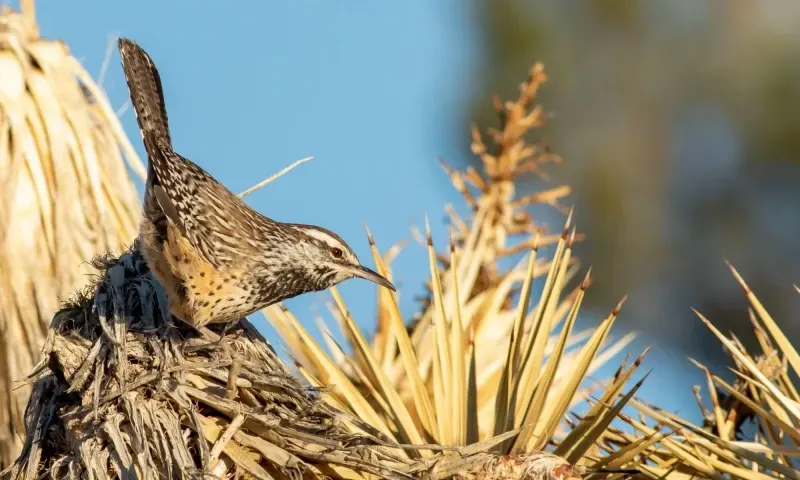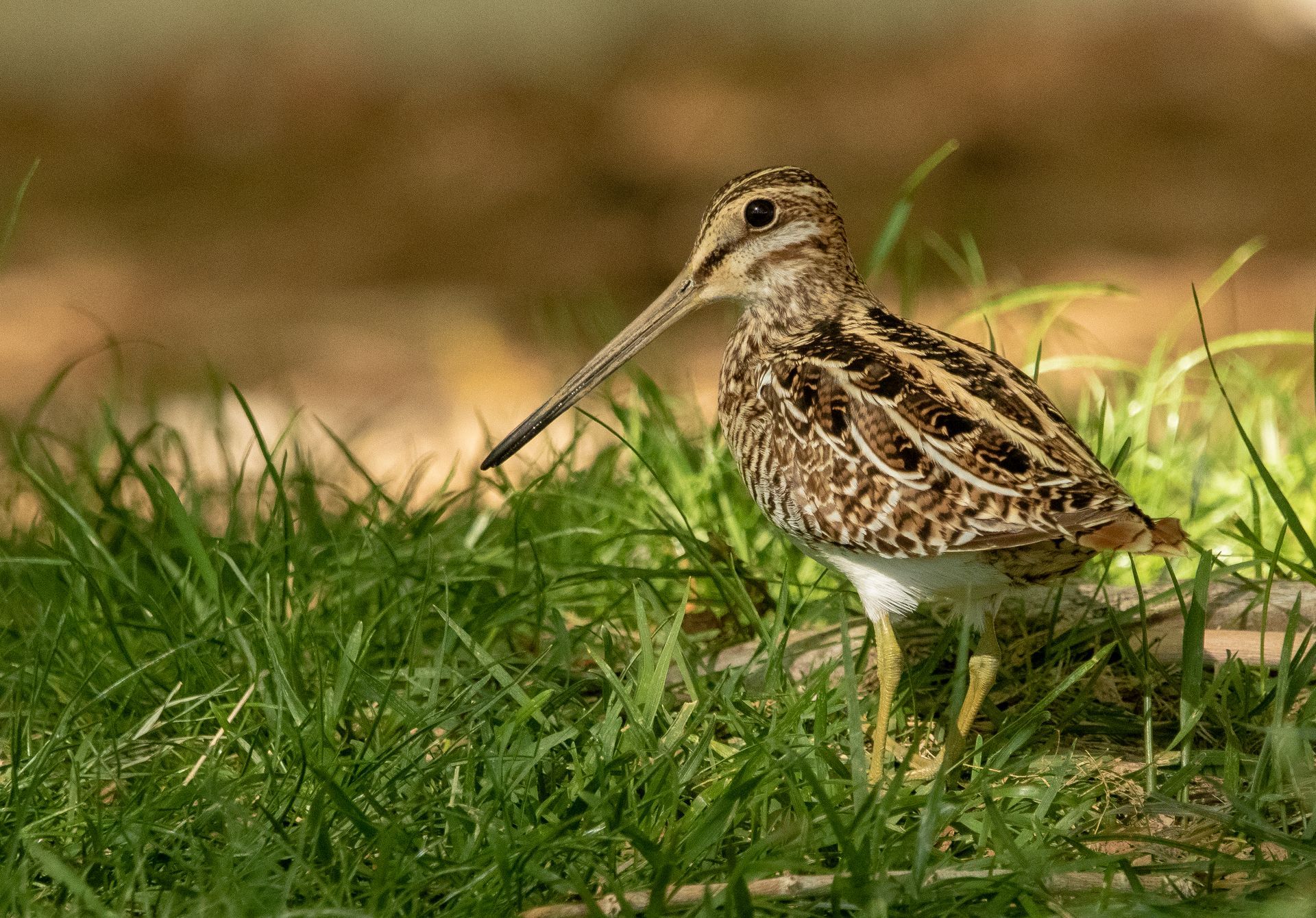"Pathways to Conservation" Applications Now Open!

Are you eager to make a difference in local bird conservation, connect with like-minded people, and deepen your knowledge of the Mojave Desert’s birds and life zones? This fall, we have a program for you!
Pathways to Conservation is our new volunteer and education program led by Alex Harper, our Education & Outreach Chair. This program is split into two cohorts: one for adults, and one for high school students interested in careers in biology and conservation.
Who Should Join?
People interested in volunteering for RRAS and supporting bird conservation should consider joining. After completing the course, you will have a wide breadth of knowledge in Mojave Desert life zones, priority bird species, threats and conservation, as well as laws that impact our birds and how our partnering agencies work.
This course is designed to support go-getters and people who want to make a difference locally. A passion for birds and conservation is a must, as well as the ability to commit to the program and maintain a volunteer commitment to RRAS after the program ends. We are especially looking for people who are curious, committed, and communicative!
Expect to Learn
Expect to get the background needed to get started at being an effective communicator about things that matter. To set you up, you will be introduced to the following and more:
- The habitats of the Mojave Desert from riparian to alpine and everything in between
- The bird families in Nevada, their roles in local ecosystems, and why they matter
- The land managers and agencies that manage the land where Nevada’s birds live, how they operate, and how Red Rock Audubon members can work with them
- The local and landscape scale threats to birds and their habitats, and what can be done
- The history of Red Rock Audubon’s role in the community and what we can build from to meet the moment
How Will You Benefit?
The course is meant to give you the “needs to know”, and there are many ways to apply what you learn. How and where in your life you apply it is ultimately going to be what interests you the most, and so it should compliment your life and your other commitments. It's simple: we are successful and supported as an organization when we help you on your unique path. Here are a few ways that you’ll benefit:
- You’ll gain skills to become an interpretative naturalist, outdoor educator, or wildlife biologist
- You’ll gain the background to become a better communicator of complex ideas as an educator or advocate
- You’ll be able to take an active role in teaching kids and teens about birds and habitats at interesting locations
- You’ll have the clarity to feel sure about the best use of your time and focus to make an effective difference
- You’ll meet land managers, biologists, and conservationists on the lands that they work on and about the land
What is Expected of You?
The Pathways to Conservation begins in early September and ends in early December. To fully complete the program, you are required to attend the classes and field trips. The classes will be recorded. Each cohort will have:
- Ten evening weekday classes on Zoom on Tuesday nights
- Five total field outings on weekends to learn more about local habitats, conservation priorities, and managing agencies, including:
- Mt Charleston
- Corn Creek at Desert National Wildlife Refuge
- Henderson Bird Viewing Preserve
- Avi Kwa Ame National Monument
After completing this program, it is expected that you begin give back a certain amount of time to RRAS as a volunteer. This is because we need people to play an active role in moving us forward. Expect to volunteer a minimum of 20 hours in 2025. Adults will step into supported RRAS-sponsored roles, such as:
- Becoming a volunteer park or field trip leader by spring 2025
- Communicating regularly with an agency or park manager and reporting to the appropriate RRAS committee.
- Participating in citizen science programs, such as Christmas Bird Counts, shorebird surveys, or Great Basin Bird Observatory’s citizen science initiatives
- Teaching students at schools, community centers, or the Henderson Bird Viewing Preserve
- Providing education public presentations to partners and organizations curious about birds
- Gathering information, preparing for, or engaging in discussions publicly or privately with policy-makers, park or land managers, and renewable energy developers
- Assist in transportation or other logistics of youth program
- Working in coalitions with our community partners
- Joining the Board of Directors for an appropriate role
For high-schoolers, students will be expected to choose a local wetland or park (such as the Henderson Bird Viewing Preserve) and do a habitat assessment and bird survey, as well as plan and execute a stewardship event and create a suggested management plan for the site. Students will learn how to do these steps through the program, and their final report will be delivered to the members of RRAS leadership. All of these skills make excellent resume boosters, and students will come away with professional connections to leaders in RRAS as well as our partnering agencies.
Class Times - Adults
Our ten adult classes are virtual on Tuesday nights, starting at 6:00 pm. Each course will be about 90 minutes. There are up to five field trips during the span of the virtual courses. They will be on Saturdays. To get the most benefit, you should aim to make most of the field trips.
Adult Virtual Meeting Times
September 10 from 6:00-7:30 pm - Mojave Desert Introduction
September 17 from 6:00-7:30 pm - Plant Communities Part One
October 1 from 6:00-7:30 pm - Plant Communities Part Two
October 8 from 6:00-7:30 pm - Nevada Birds Part One
October 15 from 6:00-7:30 pm - Nevada Birds Part Two
October 22 from 6:00-7:30 pm Laws and Regulations Protecting Birds
October 29 from 6:00-7:30 pm Threats to Birds in the Mojave and what You Can Do
November 12 from 6:00-7:30 pm - Threats to Birds in the City and What You Can Do
November 19 from 6:00-7:30 pm Communication of Complex Topics
December 3 from 6:00-7:30 Bringing it All Together
Adult In-Person Field Trip Dates
Exact times to be determined, but generally dawn to lunch time. We will meet partners and do some birding!
September 21 – Mount Charleston Life Zones and Intro to the Forest Service system
October 5 – Corn Creek Field Station and Intro to the National Wildlife Refuge system
October 19 – Avi Kwa Ame National Monument and Intro to the Bureau of Land Management
October 26 – Clark County Wetlands and Intro to Working with County Partners
November 9 – Henderson Bird Viewing Preserve and Intro to Working with City Partners
Class Times – High Schoolers
Our ten teen classes are virtual and will be on Thursday nights, starting at 6:00 pm. Each course will be about 90 minutes.
There are up to five field trips during the span of the virtual courses. They will be on Sundays. To get the most benefit, you should aim to make most of the field trips.
Virtual Meeting Times
September 12 from 6:00-7:30 pm - Mojave Desert Introduction
September 19 from 6:00-7:30 pm - Plant Communities Part One
September 26 from 6:00-7:30 pm - Plant Communities Part Two
October 3 from 6:00-7:30 pm – Get to Know Nevada Birds Part One
October 10 from 6:00-7:30 pm – Get to Know Nevada Birds Part Two
October 17 from 6:00-7:30 pm Protecting Birds
October 24 from 6:00-7:30 pm Threats to Birds in the Mojave and What You Can Do
November 14 from 6:00-7:30 pm - Threats to Birds in the City and What You Can Do
November 21 from 6:00-7:30 pm Communication of Complex Topics
December 5 from 6:00-7:30 Bringing it All Together
High School In-Person Field Trip Dates
Exact times to be determined, but generally dawn to lunch time. We will meet partners and do some birding!
September 22 – Mount Charleston Life Zones and Intro to the Forest Service system
October 6 – Corn Creek Field Station and Intro to the National Wildlife Refuge system
October 20 – Avi Kwa Ame National Monument and Intro to the Bureau of Land Management
October 27 – Clark County Wetlands and Intro to Working with County Partners
November 10 – Henderson Bird Viewing Preserve and Intro to Working with City Partners
December 7 – Conservation Project at Henderson Bird Viewing Preserve
Ready? Fill Out Our Application
If you’re reading this and thinking, “that’s me!” then fill out the application to join the program today. Space is limited in each cohort, and applications close on September 1st. If you have additional questions, reach out to Alex Harper at alexharper@redrockaudubon.com
We will try to work with you if your transportation options are limited. We don’t want to turn anyone away because they can’t make it to in-person portions, but we need time to plan for it. If you would like for us to try to sponsor or support local and relevant travel, please let us know in the application.
- Link to the adult application.
- Link to the high school application.
RECENT ARTICLES



